Here’s a cool outcrop of the Neoproterozoic Miette Group. Most of the Miette is classified as “slate” and “gritstone,” through these particular exposures, on the Icefields Parkway south of Jasper, are fine-grained and lacking in slaty cleavage. They don’t seem to have been too metamorphosed at all right here, as Sebastian shows in this photo:
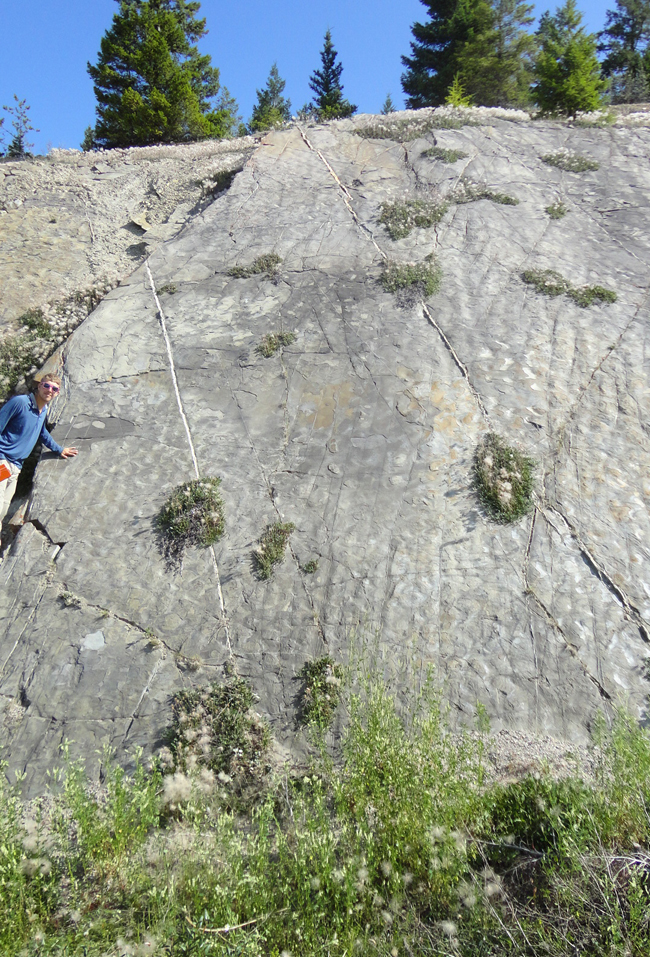
You’re looking (obliquely) up at the bedding plane there, with the bed dipping towards your perspective. Covering its surface are ripple marks – primary sedimentary structures that tend to get obliterated during metamorphism. But there are also some tectonic structures there: look closer…
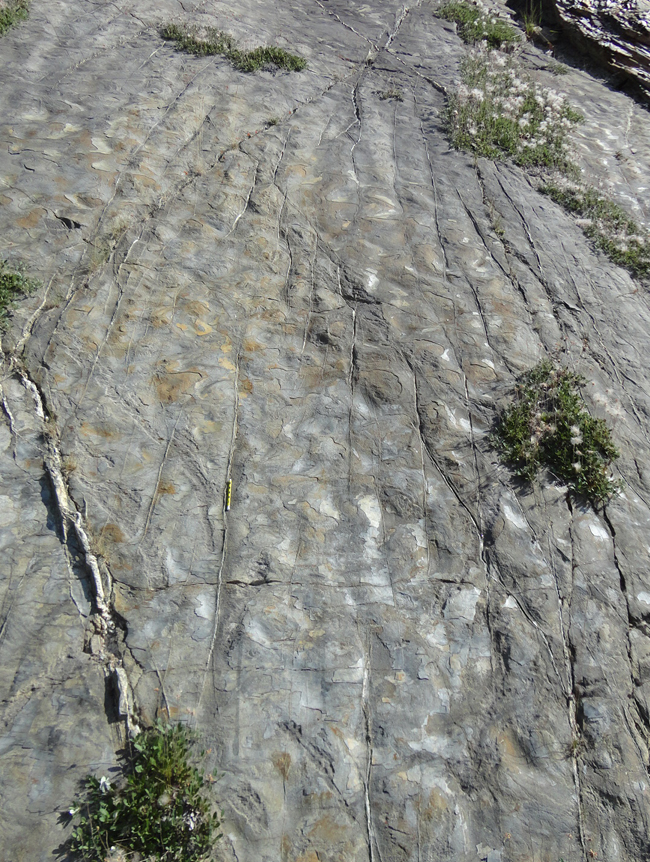
I’d annotate that up something like this:
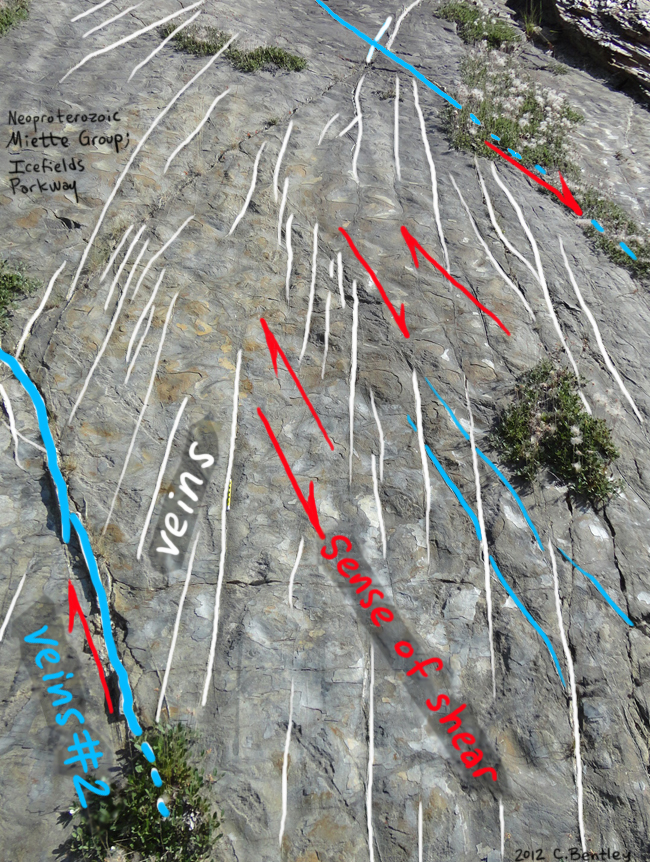
Nice!
At this same outcrop, I found a slab of rock (breaking out along the bedding plane) that looked it bore slickensides:
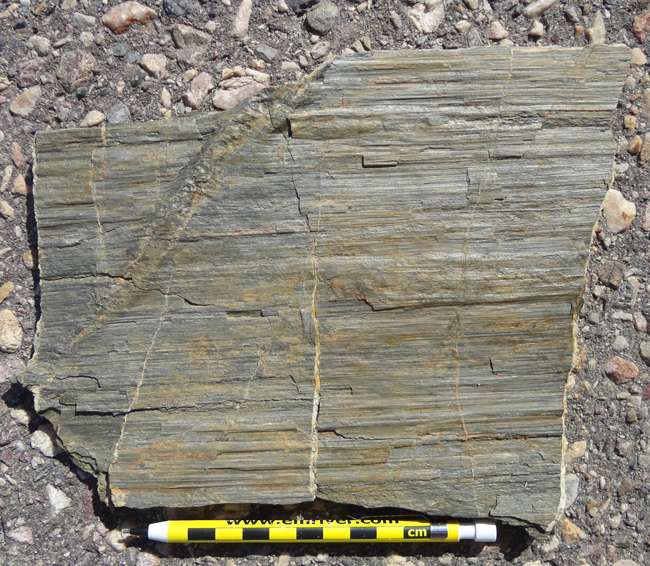
Certainly there are lineations there, perpendicular to the white veins that cross-cut the gray host rock. But the odd thing (in my mind) is the in situ relationship of these lines to the rock they came from.
Unfortunately, I didn’t photograph the outcrop I got this sample from — but from memory, it looked something like this:
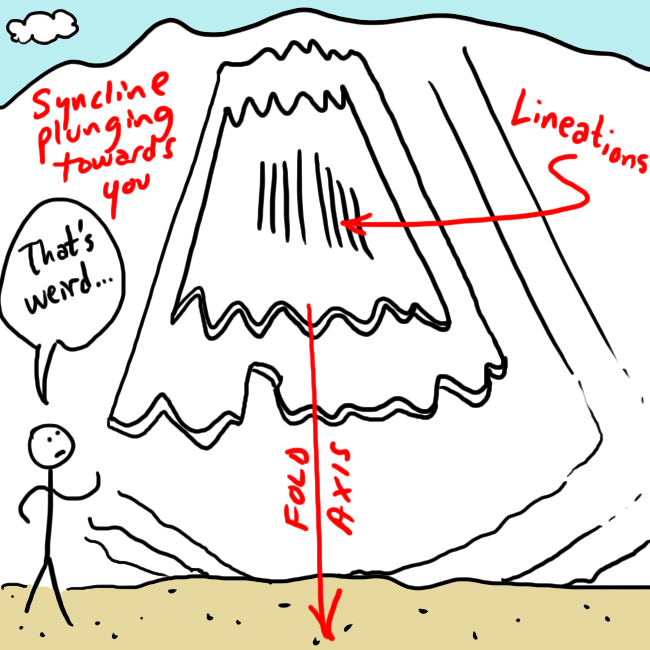
It’s from the hinge area of a plunging open synform, where the fold plunges towards the road, and the bedding layers are approximately parallel to the outcrop surface. Right in the center of the fold, there are lineations that are parallel to the hinge line (axis).
So we can swivel our sample to match its position in the outcrop:
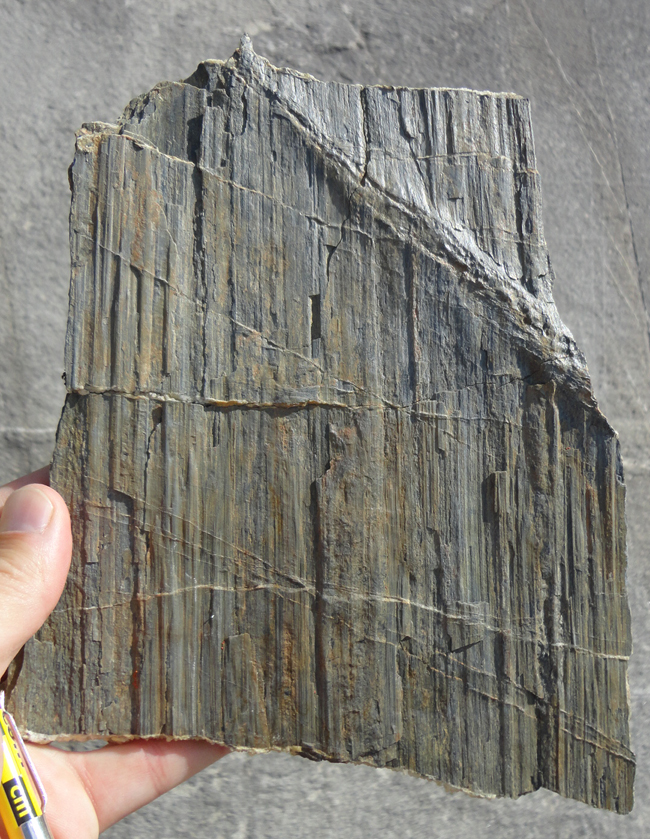
It doesn’t make too much sense in my mind for slickensides to be oriented parallel to the fold axis. I would think that if flexural slip between beds were responsible for generating slickensides, they would be perpendicular to the fold axis, not parallel to it. How to explain this? I can come up two scenarios. One is that the fold predates the slicks, so the rock layers were first compressed left-to-right (producing the open fold) and then later slid back-to-front (producing the slicks). The second option, wherein the slicks and folding are coeval, could have looked something like this:

That appears to have been the stress field responsible for the blimp-like deformed cobbles (stretching lineations) in the Purgatory Conglomerate, and though these appear to be slicks rather than stretching lineations, I can envision such a situation. The maximum principal stress (σ1) could also have been oblique to the fold axis and lineations.
Anyhow, it was a cool outcrop. I love sites where the rocks tell a story with more than one chapter: they’re ideal for decoding with students.
